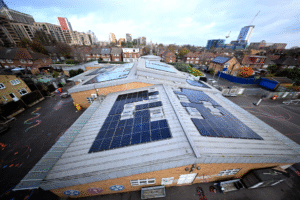Researchers at the University of Cambridge have found that bamboo can help to design more sustainable and energy-efficient buildings.
The researchers explored the way that the way heat flows across bamboo cell walls using advanced scanning thermal microscopy, which has provided a new understanding of how variations in thermal conductivity are linked to the bamboo’s structure.
According to the report, published in the Journal Scientific Reports, the building sector currently accounts for 30-40% of all carbon emissions.
The researchers argue that the use of bamboo could guide the development of more energy-efficient building materials in the future.
Using bamboo would reduce emissions compared to traditional building materials and will help to keep carbon out of the atmosphere by diverting timber from being burnt as fuel.
Darshil Shah, a researcher in Cambridge Universit’s Department of Architecture said: ‘Nature is an amazing architect. Bamboo is structured in a really clever way.’
‘It grows by one millimetre every ninety seconds, making it one of the fastest-growing plant materials.’
‘Through the images we collected, we can see that it does this by generating a naturally cross-laminated fibre structure.’
‘People may worry about the fire safety of bamboo buildings.’
‘To address this properly we have to understand the thermal properties of the building material.’
‘Through our work, we can see that heat travels along the structure-supporting thick cell wall fibres in bamboo, so if exposed to the heat of fire the bamboo might soften more quickly in the direction of those fibres.’
‘This helps us to work out how to reinforce the building appropriately.’
‘At present, products such as laminated bamboo are most commonly used as flooring materials due to their hardness and durability.’
‘However, their stiffness and strength are comparable to engineered wood products, making them suitable for structural uses as well.’
‘Seeing this as a natural structure in bamboo fibres is an inspiration for the development of better building products.’
In related news, Ecologic Studio has created a building cladding made up of algae that has the ability to turn buildings into air pollution filters.
Photo Credit – Pixabay
















